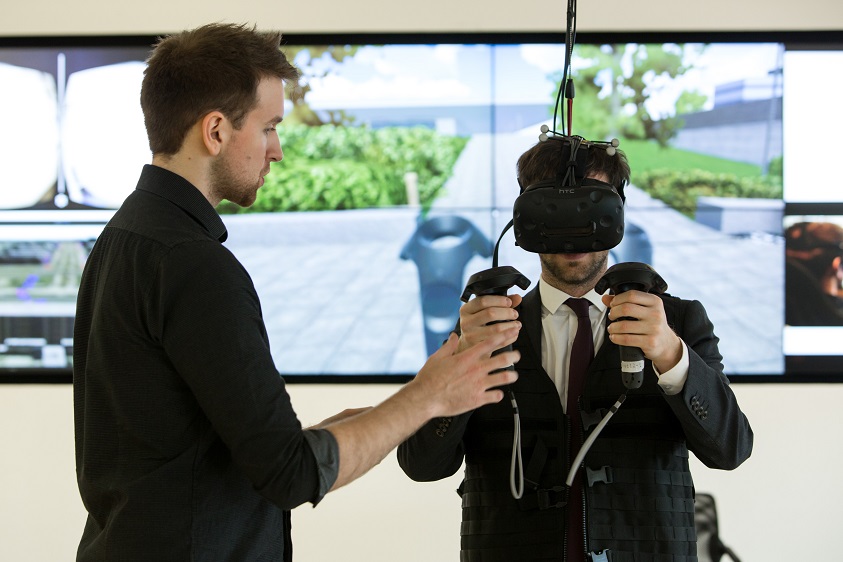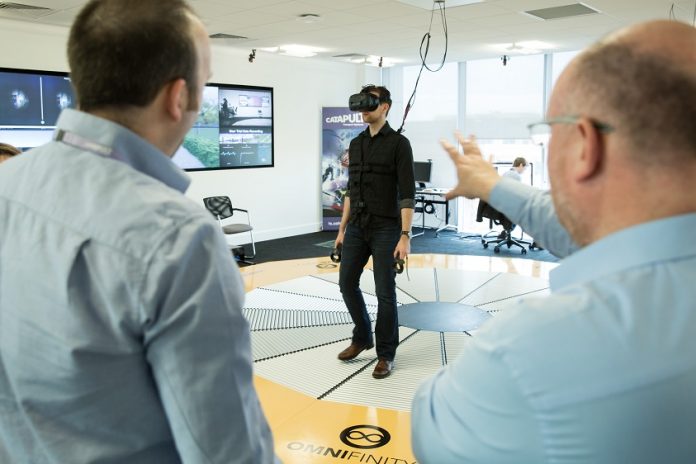Simon White, PR and Communications Manager, Transport Systems Catapult explains how virtual reality technology has been adapted to aid infrastructure design
Large scale public infrastructure and building projects are expensive, and mistakes made in the design and building process can have implications for many years after the project is complete. But what if you could fully immerse yourself in the design beforehand, viewing it from the point of view of different people and navigating your creation when it is at full capacity or at different times of the day and night?
This is what the team at Transport Systems Catapult’s Visualisation Laboratory are aiming to achieve by adapting VR technology developed in the gaming industry, for use in transport infrastructure design.
The TSC’s specialist “Visualisation Laboratory” was first conceived in 2013, when the team identified Virtual Reality as a technology with high potential for supporting transport planning, design and improvements in customer experience. In the past four years, much has changed, Virtual Reality has become a hot topic in the consumer world, with millions being invested in creating immersive experience for recreational purposes.
The TSC believes the technology is ready to revolutionise how infrastructure, and by extension building design, is approached and is actively pushing the boundaries of what is possible.
One of the Visualisation Laboratory’s recent projects has been to create a virtual central Milton Keynes, both to test levels of immersion and to carry out user trials of new transport modes such as driverless cars in the virtual environment. The team has already incorporated multiple ways to experience this environment, including walking on an omnidirectional treadmill, a driving simulator and a cycling simulator.
The advantage of Virtual Reality is its ability to fully immerse the user in a creation before it is created physically; experiencing the designs from eye level and from the point of view of your intended users.
You can experience the Milton Keynes model from the point of view of a child or an old person; someone using a wheelchair or someone who is colour blind. This means you can avoid many of the pitfalls of buildings being designed entirely from one person’s perspective and ensure your designs are fit for the end user without ever laying a brick.
The TSC’s collaborative approach has already brought together a wide variety of interested parties including SME’s, vehicle manufacturers, government offices and charities. The organisation is exploring a variety of cutting edge technologies, coupled with commercial technology from Oculus and HTC to achieve this and push the boundaries of VR to a level where people can experience a virtual environment as if it is real.

Agent-based simulations
The TSC also has extensive experience of ‘agent-based’ simulations, a method of creating large crowds of people who each have individual objectives. The result is the ability to experience the design of, for instance, a railway station when it is at full capacity at 8.30am, or during an emergency situation. You can experience all of this from ground level using VR equipment which can also measure your responses.
One of the team’s early collaborations, in partnership with Sheffield University, featured a model of Canary Wharf station populated by thousands of people, which you can navigate using virtual reality technology. The opportunities to go beyond static design and architectural projects, toward a “living” environments which can be fully customised and edited – offering huge benefits to the design process.
Virtual Collaboration
Ultimately, the team is looking at the potential of incorporating BIM data into their Virtual Reality creations, allowing them to go beyond user trials to the ability to manage infrastructure projects in Virtual Reality – whether it be exploring updates to existing buildings or designing new ones. This will allow engineers and designers to see the effects of changes to the design without real world implementation.
Amongst several concepts being explored for future development is the idea of collaboration in Virtual Reality. Designers, engineers and architects stationed anywhere in the world can “meet” in a detailed model of a build environment which incorporates in-depth BIM data, exploring it from a user’s eye view and working together to understand how different aspects of the project will be affected by each other.
In a virtual environment, it wouldn’t be unreasonable to say the possibilities are endless.
The TSC is actively looking for collaborative partners to help develop uses for Virtual Reality. If you are interested, you can head over to ts.Catapult.org.uk/VisLab.
Simon White
PR and Communications Manager
Transport Systems Catapult

















